Senate Bill 9, also known as the California HOME Act, is probably one of the most exciting pieces of legislation for any homeowner or real estate investor. It allows them to potentially add rental income to their properties, increase property value, and even sell part of their land. While SB 9 is truly beneficial, there are tons of rules and restrictions to navigate through, which are all explained and simplified in this article!
Who is SB 9 meant for and who can benefit from it?
The California HOME Act is primarily meant for owners of properties that are in single-family residential zones and neighborhoods in urban areas.
What is the purpose of SB 9?
Residents of California have been experiencing a housing crisis for the last half of a century, and most cities in the state have been struggling to keep up with housing demand due to limited housing options and a lack of new construction of homes. In order to alleviate the current housing crisis, SB 9 was designed to provide new ways to increase the housing supply options in population-dense areas.
How will SB 9 benefit California neighborhoods and residents?
- It will provide options for homeowners to build wealth through their property. The benefits of SB 9 will allow homeowners to potentially add extra units or even split their existing lot. It empowers homeowners to invest and create housing in their own communities.
- It is designed to benefit homeowners, NOT institutional investors. The legislation includes an owner-occupancy requirement for those looking to split their lots. It also limits the ability to split lots that are adjacent to each other and owned by the same individual. SB 9 also prevents institutions and corporations from evicting or displacing existing tenants who have been residing in a property for over 3 years.
- It protects single-family neighborhoods by establishing a maximum number of units. If you’re worried that your neighbors might ambitiously build 6 or more units next to your single-family home, don’t panic because SB 9 only allows up to four units on a single lot.
- It preserves historic neighborhoods and landmark districts. Properties in these areas are excluded from SB 9.
- It gives more control to cities and local governments. While SB 9 already has strict requirements at the state level, cities and local governments are able to add more restrictions and requirements.
What are the key benefits that SB 9 creates for homeowners?
There are primarily two different parts of the legislation that offer exciting possibilities:
Benefit #1: You can add a 2nd unit to your lot
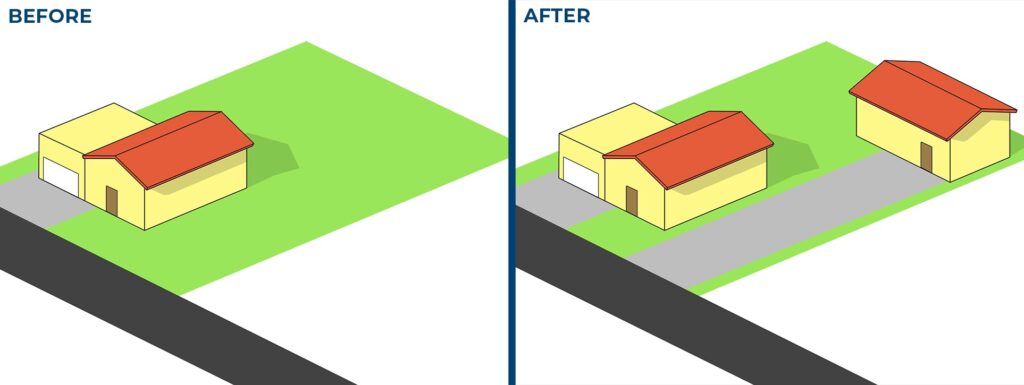
If your lot is large enough and your project meets the requirements, SB 9 allows the construction of a second house or unit on your single-family zoned lot. This also includes splitting an existing home into two units, therefore turning it into a duplex.
Benefit #2: You can split your lot into two separate lots
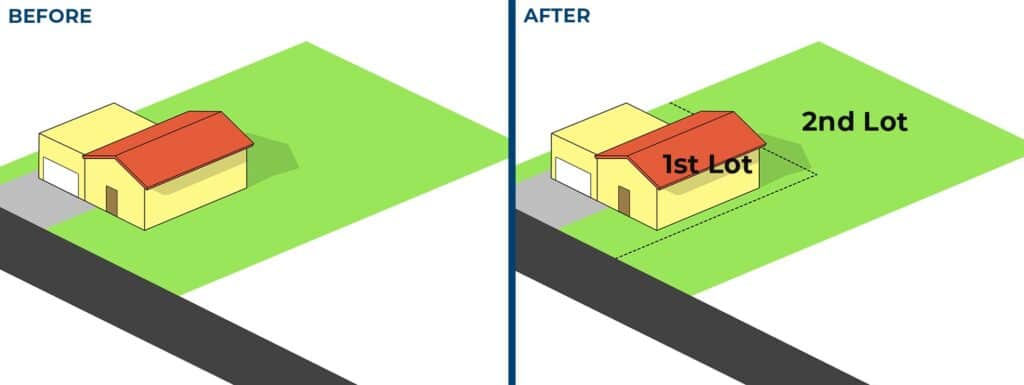
Known as an Urban Lot Split, SB-9 allows homeowners to divide an existing single-family zoned lot into two new separate lots or parcels.
Benefit #3: You can possibly have up to 4 units in 1 lot
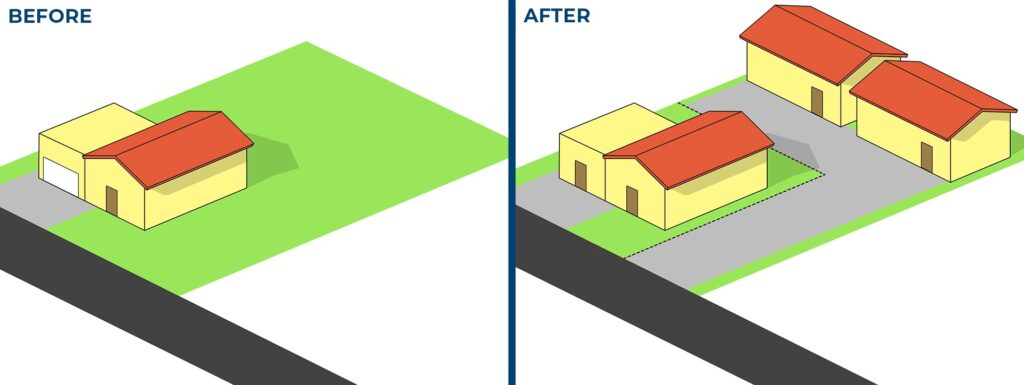
Possibly the most exciting benefit of California’s SB 9 bill is the ability to combine both of its benefits. When your property and project both fit state and city requirements, you are able to have up to four units on the same lot.
When you first split your eligible lot into two lots, each lot is able to accommodate up to two units, which could create a total of four units on a single-family zoned lot.
This benefit opens the door to other possible benefits for property owners such as increased cash flow, adding to the property’s value, and greater value appreciation.
SB 9 Second Unit Development Restrictions and Requirements
While the benefits of the California HOME Act are certainly appetizing for homeowners, there are a lot of restrictions that come with the legislation.
Important: SB 9 was passed at the state level, which means that all of the restrictions and requirements at this level apply to all the cities and local governments within California. However, every city or local government can also add more restrictions and requirements on top of the original state restrictions. This allows local governments the power to preserve the character of their districts and neighborhoods.
1. The property must be located in an urban area.
In order for a housing project to qualify under SB 9, the project must be located within a city, the boundaries of which must include some portion of either an urbanized area or urban cluster, as designated by the United States Census Bureau, or, for unincorporated areas, the parcel must be wholly within the boundaries of an urbanized area or urban cluster. It excludes very high fire hazard severity zones, prime agriculture land, hazardous waste sites, earthquake zones, floodplains that do not have adequate mitigation, and others.
2. The property cannot be located in a historic or landmark district.
In order to maintain the character and historical significance of a district or site, a property that is located within a historic district or listed on the California Historical Resources Inventory is not eligible under SB 9.
3. SB 9 does not override HOA restrictions.
If the property is a part of a homeowner’s association, the HOA has the ability to restrict or disallow the use of SB-9.
4. Each house or unit on the lot must be at least 800 sq ft.
SB 9 projects must comply with objective zoning standards, objective subdivision standards, and objective design review standards that do not conflict with SB 9. Application of objective standards must allow for development of at least two 800 square foot residential units.
5. SB 9 includes tenant protections.
SB 9 urban lot splits and two-unit housing development projects must not result in the demolition or alteration of affordable housing, rent-controlled housing, housing that was withdrawn from the rental market in the last 15 years, or housing currently occupied by a tenant for the past 3 years.
6. You cannot demolish more than 25 percent of exterior walls.
Unless local ordinance allows it or the property has not been occupied by a tenant in the last 3 years, you cannot demolish more than 25 percent of the existing exterior structural walls.
7. An existing accessory dwelling unit counts towards the total.
If your lot already has an accessory dwelling unit (ADU) or junior accessory dwelling unit (JADU), it counts towards the number of habitable units allowed on a specified lot.
8. No parking requirements unless stated otherwise by city or local governments.
The state has not included any parking restrictions or requirements in SB 9, but cities and local governments have the option to add extra requirements or restrictions if they choose to do so.
SB 9 Urban Lot Split Restrictions and Requirements
1. You must occupy one of the lots on the property.
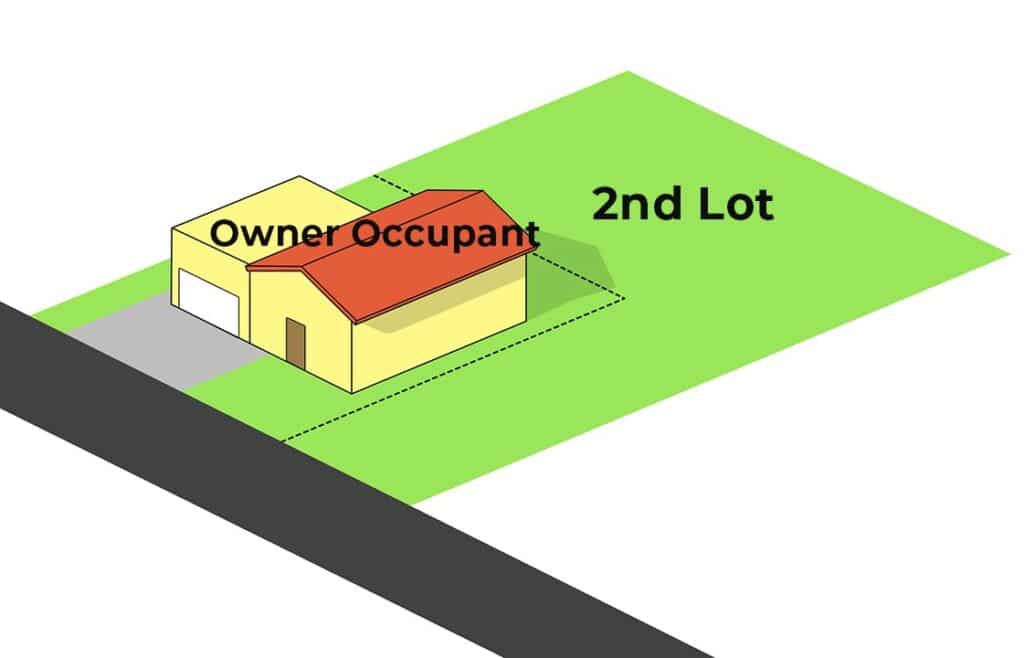
In order to perform an urban lot split, you as the owner must sign an affidavit stating that you intend to occupy one of the units as your principal residence for a minimum of 3 years from the date your lot split application is approved. Once you have split your lot, you’re able to immediately sell
2. The lot split needs to be fairly equal.
Ideally, the new parcels must be as equal in size as possible to each other or a 50/50 split. One of the new sub lots cannot be smaller than 40 percent of the original lot, or the difference cannot be more than a 60/40 split.
3. The resulting sub lots need to each be at least 1,200 sq ft.
If your original lot is less than 2,400 sq ft, you may not be eligible to qualify for SB 9 unless your city or local government approves the split.
4. The second lot must have access to public services, facilities, and right-of-way.
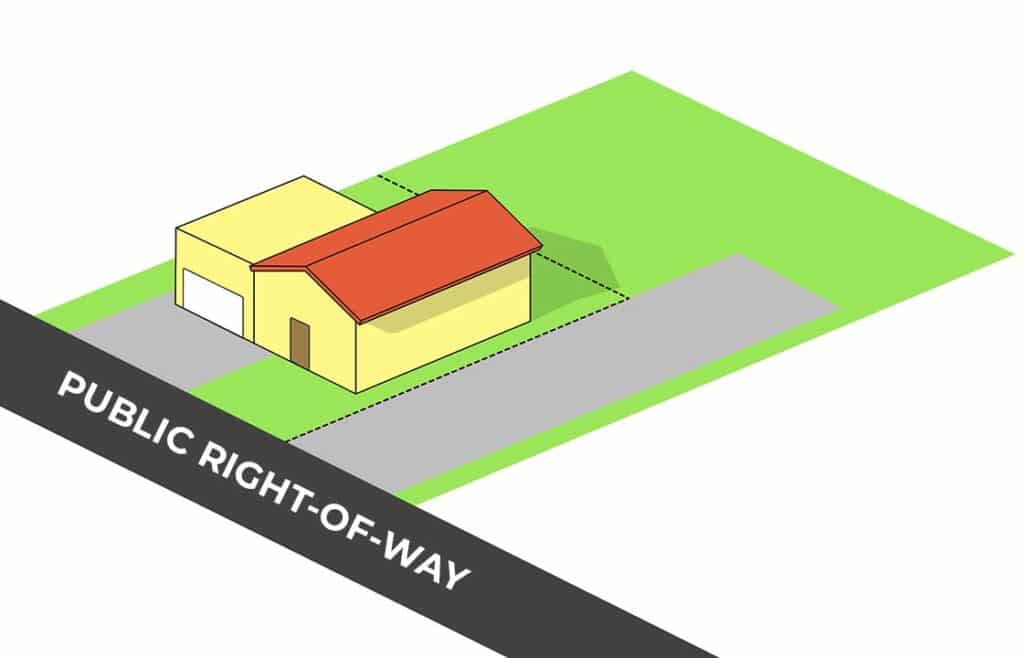
5. If you own two adjacent lots, you can only split one of them.

To prevent investor speculation and abuse of institutional investors, SB 9 prohibits owners of two adjacent lots to split both lots. If you own two lots that are side-by-side each other, you must only choose one lot to split.

If you own 3 lots that are all side-by-side in a row, you may only split the two outside lots, not the middle lot.
6. A lot can only be split once.
Once a lot has been split through SB 9, it cannot be split again.
Extra Information
- Read the full California HOME Act (Senate Bill 9)
- CA Department of Housing and Community Development SB 9 Fact Sheet
- City of Long Beach SB 9 Information
In case you have any further questions about the California HOME Act SB 9, please email [email protected], contact our team at Sage Real Estate, or call/text (562) 400-7622.







